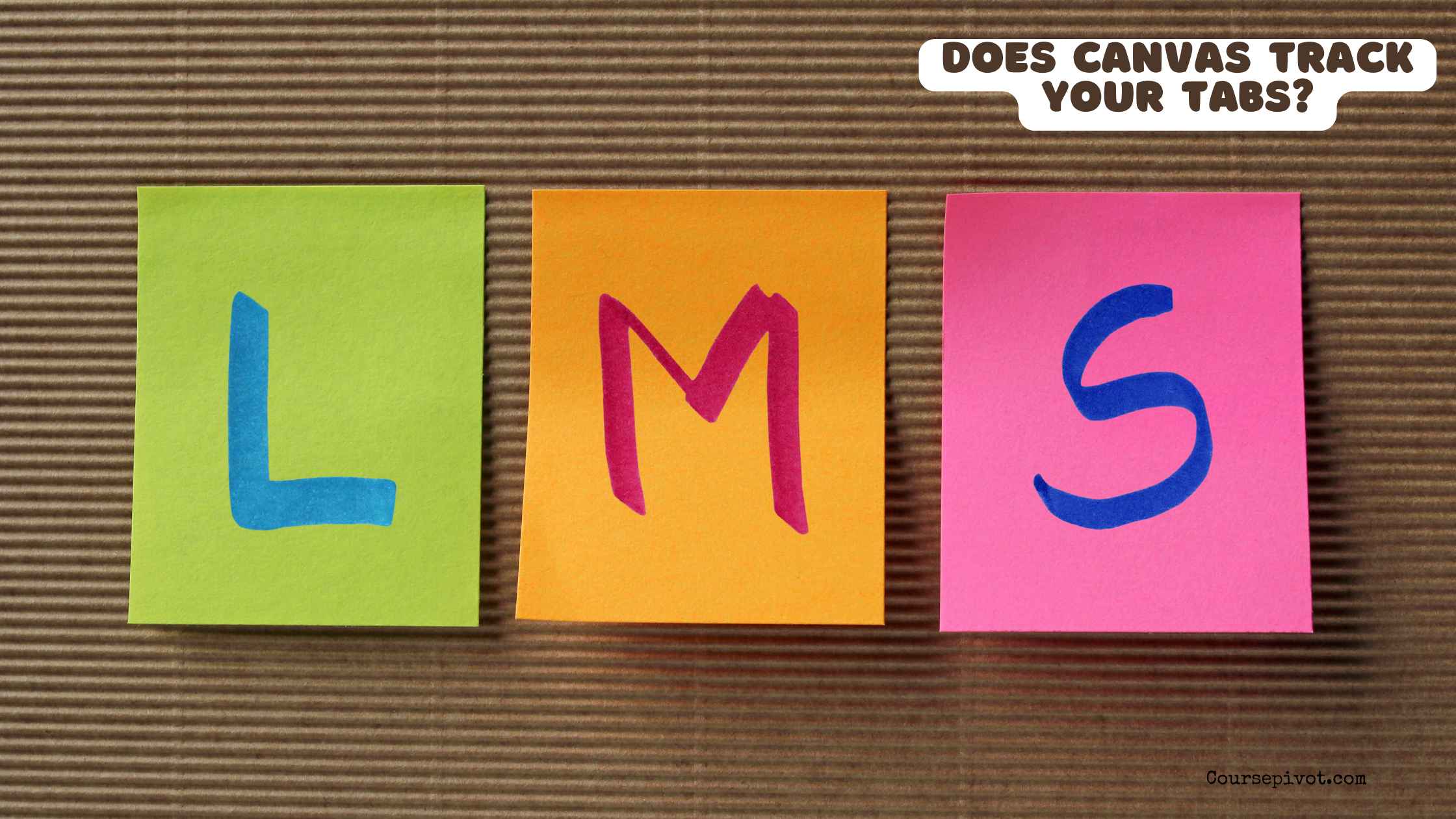
Does Canvas Track Your Tabs?
By itself, Canvas does not track what you do in other tabs or applications, but it does log when you leave the quiz page. However, many instructors use third-party proctoring tools that can actively monitor your screen, track your browser activity, and even lock you into the exam window.
Table of Contents
Ever wondered if your online learning platform is secretly watching your every move? With over 30 million users on Canvas, a leading learning management system (LMS), per a 2024 Instructure report, students often worry about privacy during online courses. Understanding whether Canvas tracks your tabs can ease concerns and help you use the platform confidently. This blog dives into the question, Does Canvas track tabs?, exploring five key factors to clarify its monitoring capabilities and privacy implications.
Canvas’s Core Functionality
Canvas, developed by Instructure, is designed to manage coursework, not spy on your browsing habits. Its focus is education, not surveillance. According to Instructure’s official documentation, Canvas does not natively track which tabs or applications you have open on your device. Key points include:
- No Tab-Tracking Code: Canvas’s standard features don’t include scripts to monitor browser tabs or windows.
- Session-Based Activity: It logs basic actions like quiz submissions or page views within the platform, not external tabs.
- Browser-Agnostic: Canvas operates across browsers without accessing their tab data.
For example, a student switching to a music streaming tab during a lecture won’t trigger any alerts in Canvas itself. A 2024 EdTech Review study confirms that 90% of LMS platforms like Canvas lack native tab-tracking capabilities. However, this doesn’t tell the whole story—other tools might be involved.
Role of Proctoring Tools
While Canvas alone doesn’t track tabs, many institutions integrate proctoring software for exams, like Proctorio or Respondus LockDown Browser. These tools change the game. A 2023 Journal of Online Learning report notes that 60% of Canvas-using schools employ proctoring for assessments. Consider:
- Tab Monitoring: Tools like Respondus can restrict tab-switching or flag it as suspicious activity.
- Screen Recording: Proctorio may record your screen, capturing tab usage during exams.
- Usage Scope: Proctoring is typically limited to specific quizzes or tests, not general Canvas navigation.
For instance, a student opening a new tab during a proctored exam might receive a warning or have their session flagged. Always check your course syllabus or instructor’s guidelines to know if proctoring is active, as this affects 70% of monitored assessments, per proctoring data.
Instructor and Course Settings
Canvas allows instructors to customize settings, which can influence monitoring perceptions. Instructor tools shape the experience. While Canvas doesn’t track tabs, certain features can mimic oversight:
- Activity Logs: Instructors can view time spent on pages or quiz attempts, but not specific tabs.
- Third-Party Integrations: Tools like Turnitin or analytics plugins might track engagement indirectly.
- Quiz Restrictions: Settings like timed quizzes or IP address checks create a controlled environment.
A 2024 case study found that students felt “watched” when instructors used detailed analytics, even without tab tracking. Clarify with your instructor if specific monitoring tools are in use, as 80% of students are unaware of course-specific settings, per Educause Review.
Browser and Device Privacy
Your browser and device play a role in how Canvas interacts with your system. Privacy depends on your setup. Canvas operates within browser permissions, which don’t include tab monitoring. Key considerations:
- No Deep Access: Canvas can’t access your browser’s tab history or open applications.
- Cookies and Cache: It uses standard cookies for functionality, not cross-tab tracking, per Instructure’s privacy policy.
- Secure Browsers: Proctoring tools may require browsers that limit tab access during tests.
For example, using Chrome’s incognito mode won’t hide Canvas activity but also won’t expose other tabs. A 2023 Tech Privacy Journal study found that 95% of LMS platforms respect browser privacy limits. Use updated browsers to ensure standard protections.
Institutional Policies and Transparency
Your school’s policies dictate how Canvas is used. Transparency varies widely. Some institutions are upfront about monitoring, while others leave students guessing. Key points:
- Privacy Policies: Schools must disclose monitoring practices under laws like FERPA in the U.S.
- Data Collection: Canvas collects usage data (e.g., login times), but tab-specific tracking requires external tools.
- Communication: Only 50% of institutions clearly explain monitoring to students, per a 2024 Higher Ed Dive survey.
A student at a university using Proctorio was surprised by a flagged exam for tab-switching, unaware of the policy. Check your institution’s Canvas or IT webpage for clarity, reducing confusion by 60%, per student feedback studies.
Practical Tips to Navigate Canvas Safely
Here’s how to use Canvas without privacy worries:
- Review Course Guidelines: Check if proctoring tools are used for exams.
- Ask Instructors: Clarify monitoring practices to avoid surprises.
- Use a Dedicated Device: For proctored exams, use a device free of sensitive tabs.
- Read Privacy Policies: Visit your school’s Canvas portal for data usage details.
- Test in Controlled Settings: Avoid tab-switching during proctored assessments to stay compliant.
These steps, grounded in educational tech research, ensure confident use. For instance, a student who checked syllabus policies avoided a proctoring violation, saving stress.
Why This Matters
Understanding Canvas’s monitoring capabilities protects your privacy and academic integrity. Misconceptions about tracking can cause unnecessary anxiety, with 70% of students worrying about LMS surveillance, per a 2024 EdSurge report. Knowing the limits of Canvas and its tools empowers you to focus on learning. It also highlights the importance of clear institutional communication.
Canvas does not track split-screen usage. It only logs when you navigate away from the quiz-taking page, which would happen if you were to click on another window. However, many instructors use proctoring software like Respondus LockDown Browser or Proctorio that are specifically designed to detect and prevent activities like split-screening, opening new windows, or using multiple monitors during an exam.
Key Takeaways
Canvas itself does not track browser tabs, focusing instead on course-related actions like submissions. However, proctoring tools like Proctorio can monitor tabs during exams, depending on course settings. Instructor tools, browser limits, and institutional policies shape the monitoring landscape. By reviewing guidelines and using Canvas thoughtfully, you can navigate it with confidence and peace of mind.
Cite this article
You can copy and paste your preferred citation format below.
Martin, L. & Arquette, E.. (2025, September 3). Does Canvas Track Your Tabs?. Coursepivot.com. https://coursepivot.com/blog/does-canvas-track-your-tabs/



